Raisins — they’re the little, sweet, and chewy fruits that can make any dish a tad bit more special. Whether you enjoy them as a quick snack, mix them in your oatmeal, or bake them into your favorite bread or pastry, there’s no denying the flavorful punch they pack. But there’s just one problem: how to store raisins long term?
Store raisins long term using airtight containers or resealable plastic bags to protect them from air exposure. For extended storage, refrigerate or freeze them in freezer-safe containers, ensuring proper sealing.
This comprehensive guide will explore the finer details of these storage techniques, common pitfalls to avoid, and bonus tips on reviving raisins that have lost their freshness.
Quick Navigation
- Raisin Storage Basics
- Long-Term Storage Methods
- Common Mistakes to Avoid
- Reviving Stale Raisins
- Savoring the Sweetness: Raisins All Year Round
Raisin Storage Basics
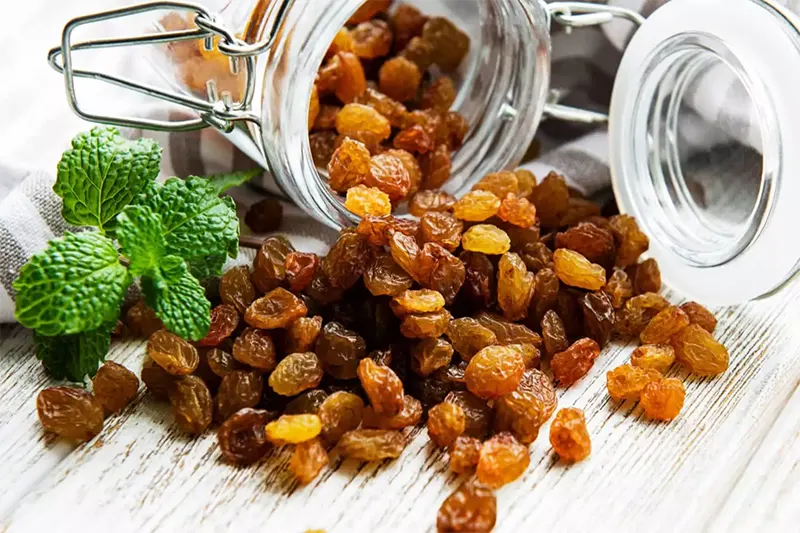
Similar to most foods with the longest shelf life, understanding the basic storage rules is important to preserve the texture and taste of your raisins. The steps in this guide are easy, but they work really well in keeping your raisins fresh for a long time.
Proper Packaging
The first step in the preservation journey of raisins begins with proper packaging. Raisins, similar to most dried fruits, are sensitive to air exposure. Over time, air can rob them of their moisture, leading to hard and unpleasantly chewy raisins.
To prevent this, always ensure your raisins are stored in airtight containers or resealable plastic bags and are completely dry for storage.
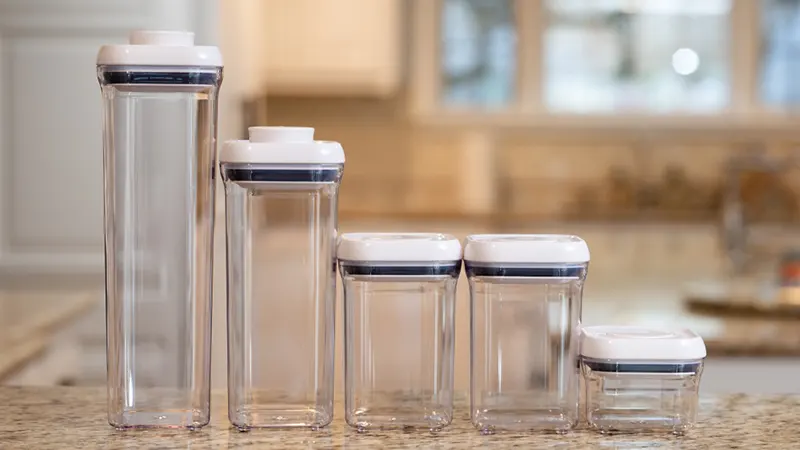
Glass mason jars or plastic containers with tightly sealed lids are excellent options, as they keep out both air and pests, ensuring a long shelf life for your raisins.
If you choose plastic bags, go for the high-quality and resealable ones that won’t easily tear or puncture. Vacuum sealed bags are also a great option.
Every time you take some raisins out, don’t forget to squeeze as much air out of the bag as possible before sealing it again.
Cool, Dry, and Dark
The second important principle in raisin storage is the environment in which they’re kept. Raisins thrive best in a dark, cool and dry place.
High temperatures can cause raisins to lose their moisture more rapidly and even spoil, while light can degrade their quality over time.
The best temperature for storing raisins is below 70 °F (ca. 21 °C), and the air should not be too damp—below 50% humidity is best.

The pantry is an ideal spot for raisin storage, but take care not to place them near appliances that generate heat, such as the oven or the refrigerator’s back.
Basements and cellars also make great storage spots, as long as they’re dry and well-ventilated. A simpler option is storing them at the back of a cool, dark cupboard away from the stove and other heat sources.
Long-Term Storage Methods
Raisins is one of the most delicious but cheap foods that last a long time. When your goal is to store raisins for an extended period, whether several months or even years, two primary methods rise to the occasion.
Each method has different requirements and benefits. Knowing these can help you pick the best one for you.
Refrigeration
The fridge is an excellent ally for long-term raisin storage. By keeping your well-packaged raisins in the cool and steady temperature of the fridge, you can effectively extend their shelf life.
This method can extend the freshness of your raisins for up to one year. However, be mindful of the refrigerator’s settings; it’s essential to keep the temperature steady as fluctuations can negatively affect the raisins.
Also, keep your raisins away from foods that smell strong, like onions or garlic. Raisins can pick up these smells over time.
To use your refrigerated raisins, simply remove the quantity you need and allow them to reach room temperature before consuming for the best taste and texture.
Freezing
If you’re a true long-term planner or have stumbled upon a bulk deal of raisins that you couldn’t resist, freezing raisins is the best option for a much longer shelf life.
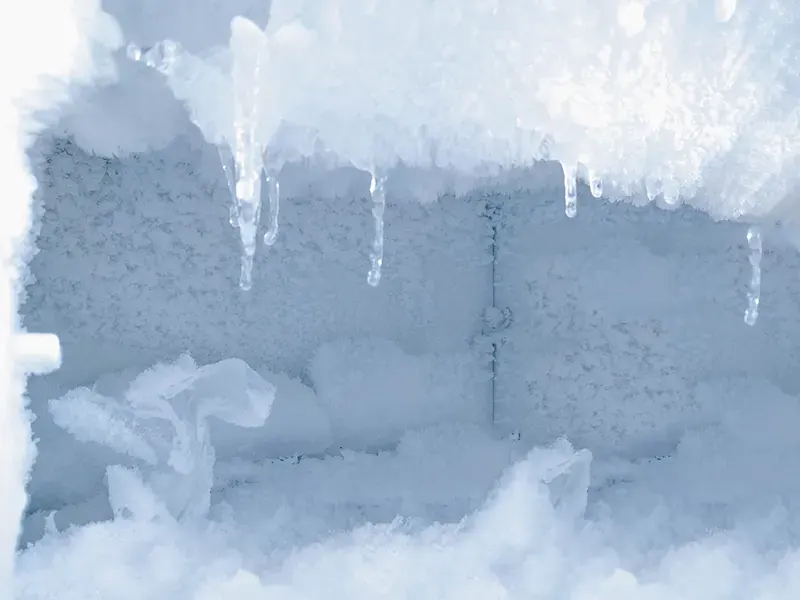
If you put them in freezer-safe containers or a high-quality sealed bag, freeze-dried foods can retain their quality for many years.
Remember to squeeze out as much air as possible from the bags before sealing to prevent freezer burn. You can also vacuum seal your container for additional protection.
Another tip is to portion your raisins into quantities you commonly use before freezing, so you only defrost what you need without exposing the entire batch to temperature fluctuations.
While freezing might slightly alter the texture of the raisins, making them a bit firmer, their taste remains unchanged. Defrosting is straightforward – just leave them at room temperature for a few hours before use.
Interestingly, you can also use them directly from the freezer in your cooking and baking – they’ll defrost quickly when exposed to heat.
For more storage tips, you can check out this guide on how to extend the shelf life of your emergency food supply.
Common Mistakes to Avoid
Even though storing raisins might seem simple, some common mistakes can make them go bad quicker. Knowing these mistakes can help you avoid them and keep your raisins tasty for longer.
Improper Sealing
A common mistake when storing raisins is not closing the container or bag tightly. A loose lid or an unsealed bag allows air to enter and interact with the raisins, leading to moisture loss and, subsequently, hard and unappetizing raisins.
Moreover, improper sealing can also let in unwanted guests, such as pests, start mold growth, and allow the raisins to absorb odors from other foods in your pantry or fridge.
To avoid this, always double-check that your plastic or glass containers are airtight and your bags are sealed tight to avoid excess oxygen. If you’re using a container, listen for the telltale ‘click’ or ‘pop’ that signifies a secure seal.
Neglecting Temperature
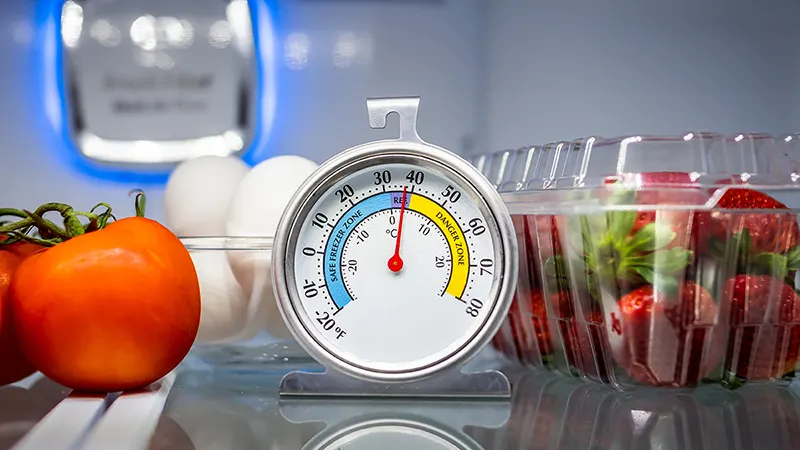
Another common mistake is neglecting the importance of temperature for long-term raisin storage. The storage location is important and as mentioned earlier, a cool dark place with stable temperature is vital for maintaining raisin quality over time.
Storing them in places with a humid climate or areas with frequent temperature changes, such as near your stove or on top of the fridge, can speed up the degradation process and lead to rancidity.
This is really important for raisins kept in the fridge or freezer. Temperature changes can make water drops form, and this can lead to mold.
Ensure that your fridge or freezer’s temperature is set correctly and remains consistent. Also, avoid frequent door opening, which lets in warm air and causes temperature spikes.
Reviving Stale Raisins
But what if, even after trying your best, your raisins get too dry or hard?
Before you consider tossing them into the trash, know that there are ways to revive stale raisins, restoring much of their original softness and juiciness.
These different methods and rehydration techniques can give a new lease of life to your old raisins.
Soaking
The easiest way to make your dry raisins juicy again is to soak them in hot water. Just put the raisins in a bowl, pour hot water over them, and wait for about 15-20 minutes. The raisins will soak up the water, become juicy, and swell up.
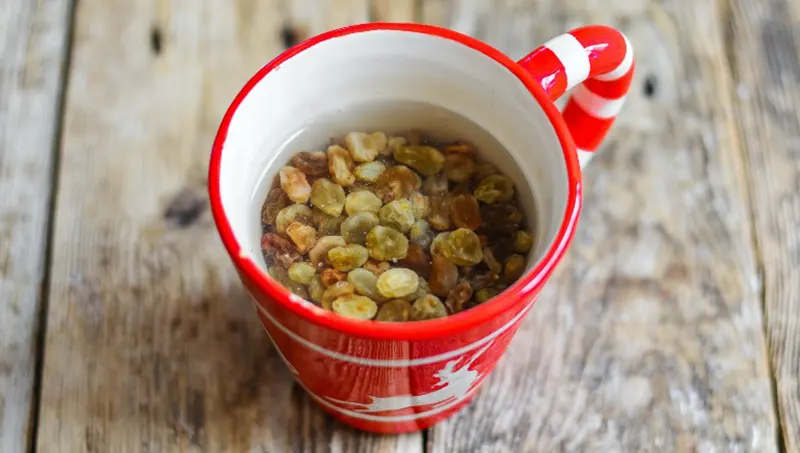
This soaking process not only brings back their softness but also enhances their sweetness, making them a perfect addition to your baking or cooking. After soaking, remember to drain them and pat dry before using.
Steaming
If you’re dealing with particularly stubborn raisins that refuse to soften after soaking, or if you need a faster solution, steaming is another method you can try.
To do this, put the raisins in a steamer or a sieve over a pot of boiling water. Cover and let the raisins steam for about five minutes.
The combination of heat and moisture will help to penetrate the raisins’ hardened exterior and restore their moisture content.
Rehydrating in Liquid
You can also revive raisins by soaking them in a liquid you like. This could be fruit juice, rum, wine, or even a flavored syrup.
The liquid will not only moisten the raisins but also give them its flavor, making your recipes even more interesting. Just remember to soak them overnight for maximum absorption and flavor infusion.
Microwaving

If you don’t have much time, microwaving is a fast and simple way to revive your raisins. Just put your raisins in a bowl that’s safe for the microwave, add some water, and microwave them on high for about 10-20 seconds.
The heat from the microwave will rapidly rehydrate the raisins, making them ready for immediate use. Be ready to use them immediately, as they might get hard again once they cool down.
Savoring the Sweetness: Raisins All Year Round
Knowing how to store raisins long term can keep your favorite snack or recipe ingredient fresh and ready to use whenever you need it.
From proper packaging to the ideal storage conditions and methods, this guide has covered all you need to know. So go ahead, stock up on those raisins, and enjoy them year-round!

I liked your article on raisens, but I have a question, am I missing something?
You stated “Raisins, similar to most dried fruits, are sensitive to air exposure. Over time, air can rob them of their moisture leading to hard and unpleasantly chewy raisins.”
Then you mention ” . . . and are completely dry for storage.” Could you clarify that for me?
Here is a suggestion for keeping the plastic lids sealed tighter on the round raisin containers. When I open a new container I do NOT pull the sealing liner off the top. I use a small knife to cut the seal around the inside of the container, leaving a small strip of the seal on the container’s lip. Thus allowing the lid to seal a little tighter than if the whole seal had been removed.